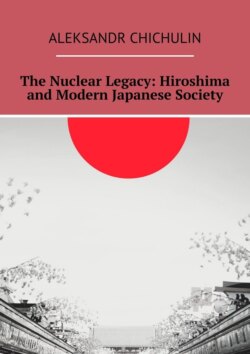Читать книгу The Nuclear Legacy: Hiroshima and Modern Japanese Society - - Страница 2
Introduction
ОглавлениеWorld War II context
In the early 1940s, the world was gripped by a violent confrontation known as World War II. On one side was the Alliance-an alliance of the United States, Great Britain, the Soviet Union, and other allies-and on the other side were the Axis forces-Nazi Germany, Italy, and Japan.
With the outbreak of war, Japan actively expanded its possessions in Asia and the Pacific, and Germany sought to dominate Europe. In 1941, when the United States entered the war, it became an important factor in the conflict, supporting the Allies and contributing to the stabilization of the world order.
In mid-1945, World War II was nearing its disastrous end, but Japan continued to resist, refusing to give up. In such a difficult situation, the United States faced moral dilemmas and sought to find a way to end the war that would minimize human losses and lead to the long-awaited peace.
It was at this tipping point that the idea of using atomic weapons to force Japan to surrender emerged. This choice and its consequences were some of the most controversial and darkest moments in human history, leaving a nuclear legacy that is firmly embedded in the minds of the entire world.
Development of the US nuclear program
During World War II, some scientists realized the potential for creating a new, terrifying type of weapon-the atomic bomb. This was the beginning of the Manhattan Project, a clandestine scientific and technological effort by the United States to develop nuclear weapons.
In 1939, American scientists Albert Einstein and Leo Szilard warned President Franklin Roosevelt about the possibility of German scientists developing nuclear weapons. This warning led to the launch of the Manhattan project, which began to actively attract the best minds in the country.
The research team, led by physicist Robert Oppenheimer, focused its efforts on building the atomic bomb. The project was huge and required significant resources. However, thanks to the great minds and perseverance of scientists, the project has made significant progress.
Finally, on July 16, 1945, the first nuclear test explosion codenamed “Trinity” occurred in the New Mexico desert. This historic moment marked the successful development of the atomic bomb and confirmed the great scientific breakthrough of the American people.
With the development of the US nuclear program and the successful test of a nuclear bomb, the question of the use of this new weapon in time of war arose. This decision brought a new level of destruction and fear to the world, ushering in the nuclear age.
